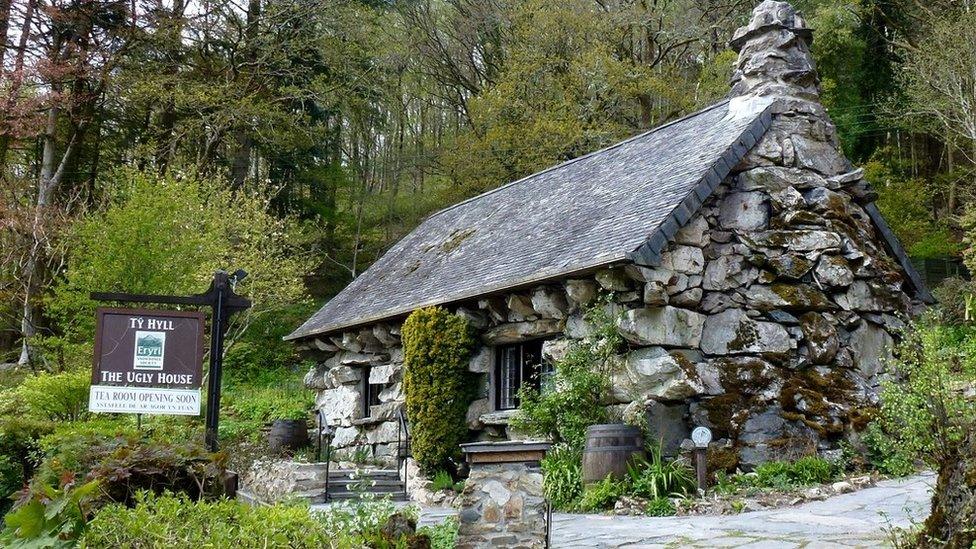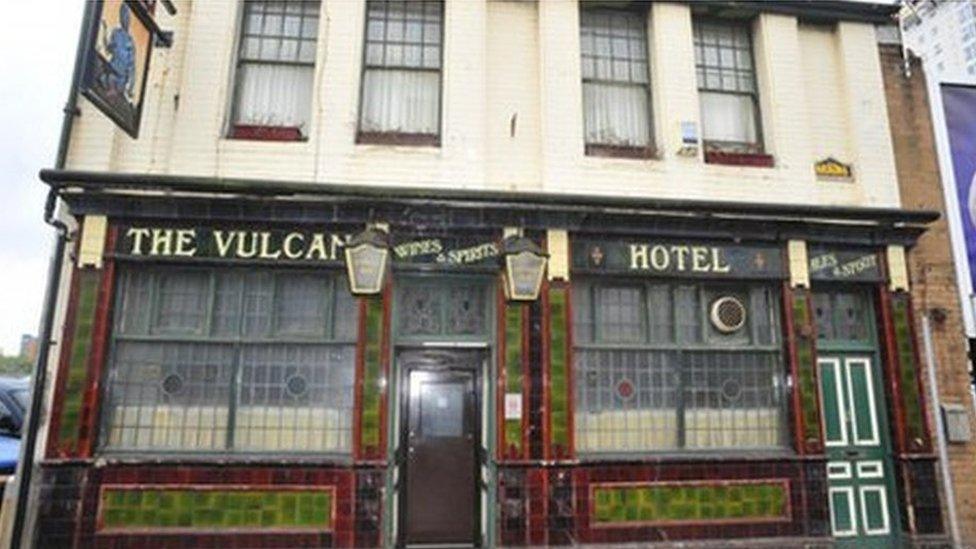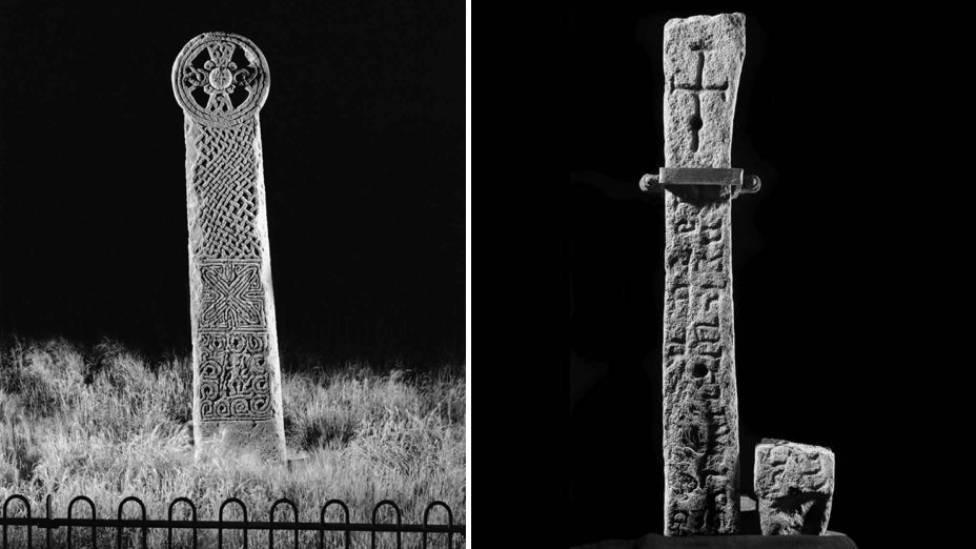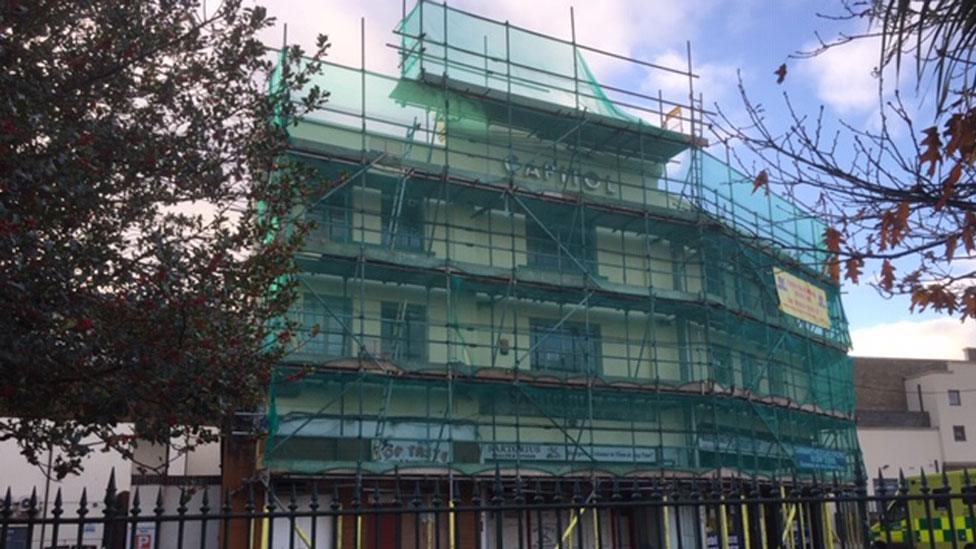Tŷ unnos: Homes made using 17th Century 'squatters' rights'
- Published

Llainfadyn cottage was built in 1762 in Rhostryfan, Gwynedd, and rebuilt at a museum in 1962
If you think getting on the property ladder today is tough, spare a thought for early modern Welsh rural labourers.
The custom of tŷ unnos, which translates into English as house in one night, was a commonly-held folklore across Wales between the 17th and 19th centuries.
It held that, if a squatter could build a house on common land between dusk and dawn, then the occupier could lay claim to the legal freehold of the property.
One academic believes that, in a time when rising house prices in rural Wales are "causing difficulties" for young people hoping to remain in their home villages, there's "renewed interest in values like tŷ unnos".
Smoke had to be issuing from the chimney before sun-up and some regional variations, in particular in Denbighshire, maintained the builder could also claim all the land within the distance they could hurl an axe from each of the four corners of the house.
Although the tradition is widely acknowledged, Dafydd Wiliam, principal curator of historic buildings at St Fagans National Museum of History in Cardiff, said finding examples of genuine tai unnos (the plural of tŷ unnos) is virtually impossible.
"As they had to be built overnight, tŷ unnos cottages were by necessity simple structures built from wattle and daub or turf, and capped with a rudimentary thatched roof.
"They needed to last no more than a year while the family could construct a more permanent dwelling, but once a claim to the land had been established overnight, the tai unnos which came in the following months were sturdier, built from stone and slate, and often had a small mezzanine floor or 'crog loft' as a sleeping space.
"So while there are cottages you could say are part of the tŷ unnos tradition, there are no surviving original examples."
Among St Fagans' collection is Llainfadyn cottage, an early example of a more permanent tŷ unnos, built in 1762 in Rhostryfan, Gwynedd, and rebuilt at the Museum in 1962.
The last known tŷ unnos was built in 1882 in Flintshire by four brothers from Lancashire - an adventure which was fictionalised in Oliver Onions' 1914 novel Mushroom Town

Tŷ Hyll, (The Ugly House) in Snowdonia is an example of a tŷ unnos
Tŷ Hyll, (The Ugly House) in Snowdonia is sometimes described as an example of a tŷ unnos cottage, but was likely built in the 19th Century as a romanticised version of the tradition.
Tŷ unnos has no basis in either English common law - to which Wales has been subject since 1536 - or medieval Welsh laws, such as those set out by Welsh prince Hywel Dda.
Nevertheless there are equivalent customs in Ireland, Italy, France and Turkey.
"Between the 17th and 19th centuries the enclosure of land into large, privately-owned farms and the eviction of those who lived and earned their living from that land, pushed the rural poor to the margins. A theme common to many regions of the world.
"As a folkloric tradition, there were no hard and fast rules and people may have believed different things in different areas. In some areas people believed that throwing an axe from the threshold of the finished cottage would mark the extent of the small holding that went with it," Mr Wiliam said.
"However, as an axe would have been a valuable tool to an impoverished family, no-one would risk blunting it by actually hurling it."
Dr Juliette Wood, Cardiff University's Welsh Folklore expert, agrees, describing tŷ unnos as "analogous to the Rebecca Riots".
She argues that it follows in a broader Welsh tradition of recalling and adapting ancient folklore to meet the needs of the time.
"Long before the 17th Century, there are Welsh legends of wagers between land owners and peasants, over what could be achieved in a night, and most follow a theme of the plucky underdog outwitting their greedy overlords.
"One surrounds a lord agreeing to grant the amount of land which could be encircled by a single ox hide, so the tenant cuts the hide extremely thinly and encompasses the whole farm, whereas another involves an entire village coming together to win a bet of how much land they could plough overnight."

The date Llaindfadyn cottage was completed is carved on the right hand side of its fireplace lintel
She added that even the "smoke from the chimney" motif echoes the legend of St David and the smoke which is said to have risen from his first monastic foundation, which became Ty Dewi, the cathedral of St David.
Tŷ unnos waned in popularity after the industrial revolution, when thousands of rural labourers migrated to Swansea, Cardiff and the valleys to work in coal and metal.
However, Dr Wood believes the sentiment behind it has never entirely left us and is again becoming increasingly relevant in the 21st Century.
"There is a homelessness charity in Wrexham called Tŷ Unnos, and in 2009 Coed Cymru built a tŷ unnos for the Smithsonian Folklore Festival in Washington DC.
"In a time when rising house prices in rural Wales are again causing difficulties for young people to remain in the villages where they were born, there's renewed interest in values like tŷ unnos."
- Published5 July 2020

- Published18 July 2020

- Published6 November 2019
